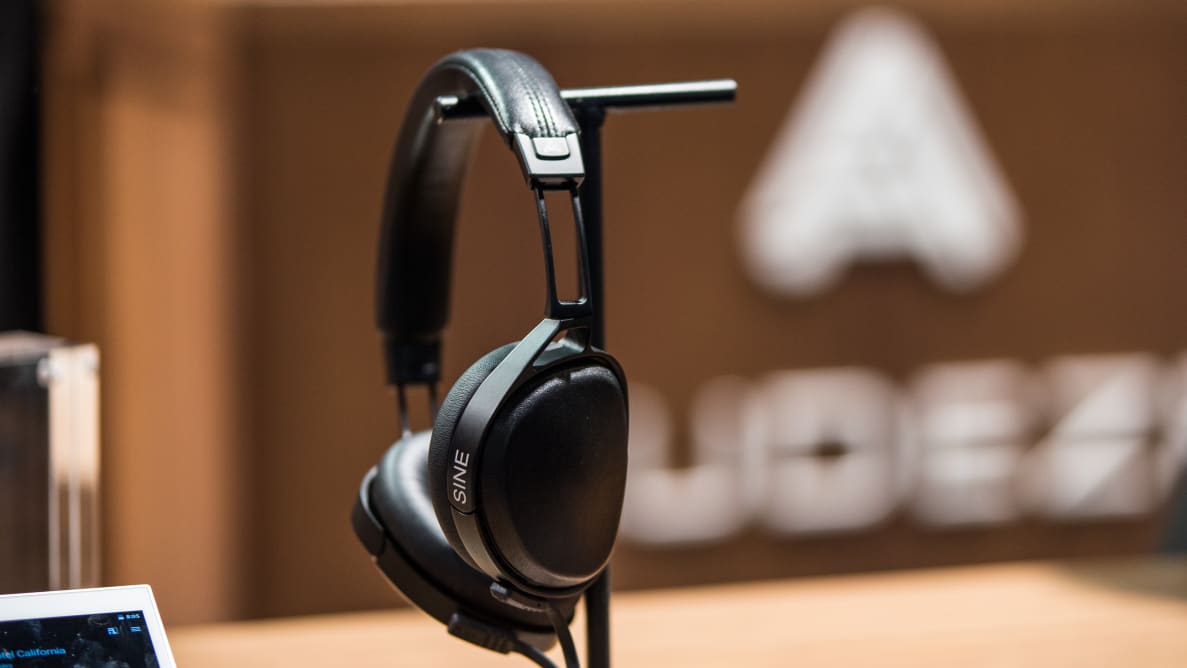At CES, the company unveiled its new Audeze Sine (MSRP $499.99), the world's first on-ear planar magnetic headphones. Smaller, lighter, and much cheaper than Audeze's top models, the Sines are meant to introduce a whole new segment of the market to the beauty of planar magnetic drivers.
But the innovation doesn't stop there. Available with either traditional cables or lightning connectors for use with the Apple iPhone, Audeze's Cipher cable also features an in-line remote, amp, and DAC. They're still not exactly cheap, but combine the two and you've got a set of cans that provide plenty of value for under $500.
Breaking new ground and doing it in style? We're listening.
Design
Bringing sexy back
It's hard not to gush about the Sines. While they're not the first closed-back mobile planar magnetic headphones, the Sines are special in that they bring the tech to a more mobile audience.
High-end headphones sound amazing, sure, but bringing them out into the wild usually results in a rat's nest of cables and accessories that get tangled up, stuck in your bag, or simply take up too much space. Who really wants to stuff extra amps or DACs in their pocket just to make their headphones work with their smartphone?
{{ photo_gallery "tour" }}
That's why I'm impressed with Audeze's first on-ears: they take big risks, but they're gunning for heights not reached by the vast majority of consumer headphones. And they do it with a fantastically well-designed and mature product—as long as you've got the right phone.
The optional Cipher cable (likely $100) has a built-in digital-to-analog converter as well as an amp, but it requires a lightning connector (and the power it provides) to operate. You can skip both the DAC and the amp and use the included 3.5mm cable, but that'll require a headphone jack—which the upcoming iPhone may ditch.
Otherwise, I found the Sines to be comfortable and seemingly durable, sporting removable, tangle-free cables that are quite beefy compared to most. A metal band wrapped in stitched leather is unlikely to break after a little rough treatment, and the ear pads are partially removable for cleaning. Unlike many other high-end cans with planar magnetic drivers, you won't feel compelled to give these the white-glove treatment.
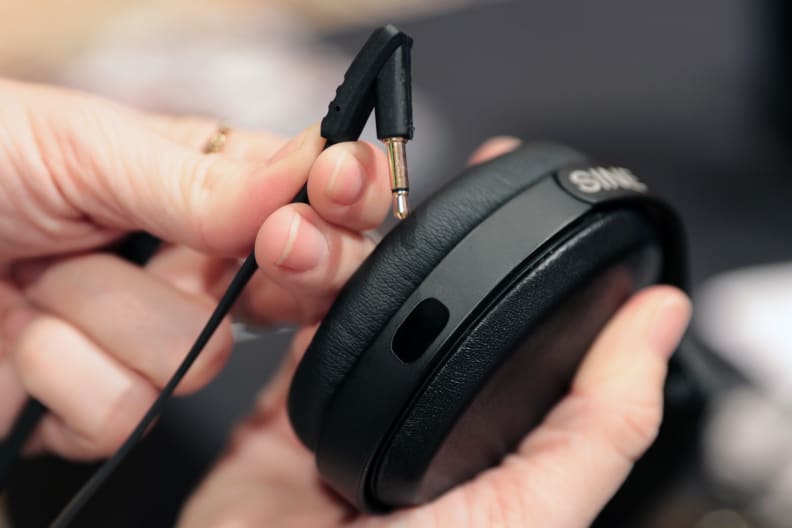
Removable cables are an ace durability and customizability feature.
Some might find on-ear headphones uncomfortable, but I found the larger-than-average Sines aren't far off from the current crop of V-Modas. They're quite large in comparison to other on-ears, but tastefully small when placed next to alternatives like the Beyerdynamic Custom One Pro Plus. Consequently, they're far more comfortable if you're like me and you hate things that just rest on your ears.
Why Planar Magnets?
Warning: we're going full nerd.
So why are planar magnetic drivers a big deal? In short, they do a better job of reproducing sound. That's because they're easier to power with an amp (thanks to a purely resistive design), and they're more easily able to fool your auditory system into thinking it's hearing sound produced outside of your headphones.
Ears are weird things. They vary from person to person, and the geometry of the human ear isn't conducive to hearing sounds produced from a small origin point (as in headphones). Since you're trying to recreate the sense of depth you get from a live performace (what reviewers typically call a "soundstage"), you want headphones that can get around this problem and fool your ears.
Audiophiles the world over prize a larger, flatter, more planar wavefront because it more closely mimics how you normally hear the world. Sound hits your outer ear in the same way that it would if you were at a concert, or listening to your stereo system in a large room. You can see this reflected in the most lusted-after headphones on the market today: The Sennheiser HD 800s, the Audeze LCD-2s, and the Stax SR-009s all present a large planar (or semi-planar) wavefront.
The upshot is that music will sound more or less the same from person to person, since the planar drivers almost completely control for the geometry of your outer ear. How music sounds in a large room is pretty close to what you'll hear from these cans. Many headphones claim to offer this kind of performance, but it's simply not true unless you're paying out the nose for electrostatics or planar magnetics.
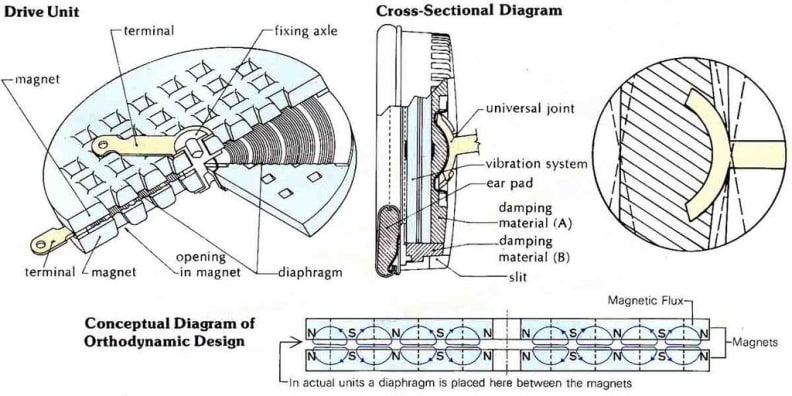
A planar magnetic speaker is far different in shape.
There are many other advantages. For example, distortion is typically orders of magnitude better than it is with traditional dynamic drivers, and the speaker's design is theoretically capable of producing clearer sound.
That's the second major advantage. If you're trying to make a speaker sound clearer, you typically need to increase the force by which it moves, or reduce its mass. An inherent advantage of planar magnetic speakers is that they do both at the same time. Intensely strong magnets move a very light diaphragm to produce sound, meaning where dynamic drivers have trouble—the highest highs and lowest lows—these headphones don't even break a sweat.
The Experience
Breathtaking
{{amazon name="Sennheiser HD 800 Around Ear Dynamic Headphone", asin="B001OTZ8DA", align="right"}} These cans are awesome. They're not the LCD-4s or anything, but modern planar magnetic headphones are a massive step up from your garden variety dynamic cans. I'm not comfortable making any hard and fast claims about the performance of headphones I haven't tested under lab conditions, but even on the busy CES show floor it was easy to hear the advantages of the Audeze Sines over many other headphones.
No uncontrolled listening environment is ever going to be perfect, but these are the rare cans that offer a high-end listening experience in a wide range of environments. The Cipher cable is overkill for most, but it's essential if you're going to be listening to these on an iPhone with any regularity. Using the lightning connector cable will draw power, but it'll get the best performance out of the Sines when you're on the go.
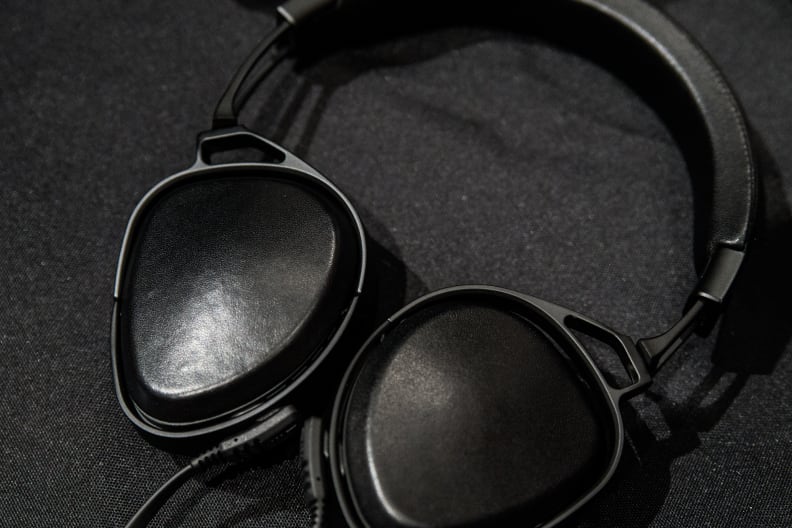
Audeze does on-ears right.
Using the 3.5mm cable is just fine, and if you're listening to the Sines without the lightning cable you definitely won't be disappointed—they still function very well. And of course, if you're listening at home with an DAC/amp setup, the Cipher cable's built-in amp/DAC isn't necessary.
I do question the Cipher cable's impact on the iPhone's battery, especially given the disappointing battery life of recent iPhones. If you're buying the Sines, you should also budget for something like the Apple Battery Case. That's advice I generally give out anyway, but it's more relevant with power-hungry headphones.
Conclusion
Times are a-changin'.
The headphone industry moves slowly, so when formerly enthusiast-only tech makes its way into a more consumer-friendly product, it's a big deal. So while we saw dozens of headphones at CES 2016, the Sines were easily the most intriguing.
By putting planar magnetic drivers in a set of headphones that don't have to be tethered to your hifi, Audeze is swinging for the fences. With any luck, the move will inaugurate a trend toward better, more technologically advanced consumer headphones than we've grown accustomed to in the iPhone age.
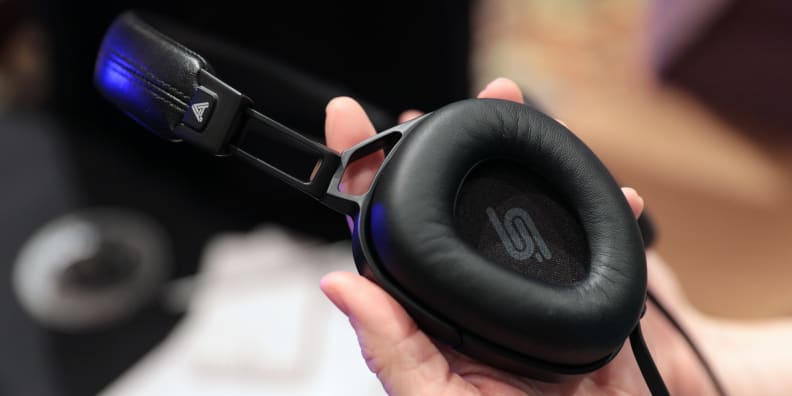
These are seriously plush on-ears.
There are a few drawbacks, of course—most notably, the lightning connector's toll on your iPhone's battery life. And if you don't own an Apple device, you're going to be out of luck when it comes to 24-bit audio on the go.
If you're listening to your music on the subway or on a crowded street, you're bound to be fighting with outside noise. These aren't the perfect cans for that environment, but headphones that can sound great in the right environment are much better than ones that are just "okay" in all situations.
And yes, the Sines are still expensive at $499, but it's important to remember that many portable amps alone go for $300. You may have to squint a bit, but in the right light you could almost call the Sines a bargain.
All in all, the Audeze Sines are enormously promising headphones. Too many high-end options ignore the fact that even audiophiles listen to music outside the home, and as a result, audio hobbyists have had to collect headphones for different uses like they were Pokémon. The Sines are great because—assuming they live up to the legacy created by Audeze's other planar magnetic headphones—they'll kill most birds with one stone.
Impressive... most impressive.
Related Video
{{brightcove '4692210181001'}}
Meet the tester
A seasoned writer and professional photographer, Chris reviews cameras, headphones, smartphones, laptops, and lenses. Educated in Political Science and Linguistics, Chris can often be found building a robot army, snowboarding, or getting ink.
Checking our work.
Our team is here for one purpose: to help you buy the best stuff and love what you own. Our writers, editors, and lab technicians obsess over the products we cover to make sure you're confident and satisfied. Have a different opinion about something we recommend? Email us and we'll compare notes.
Shoot us an email
